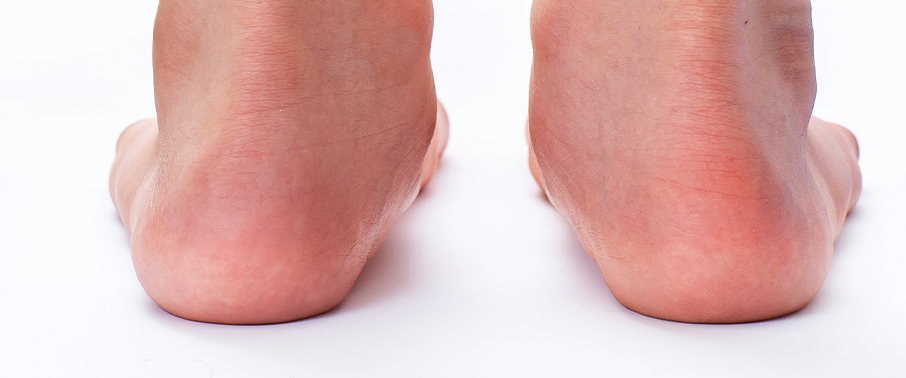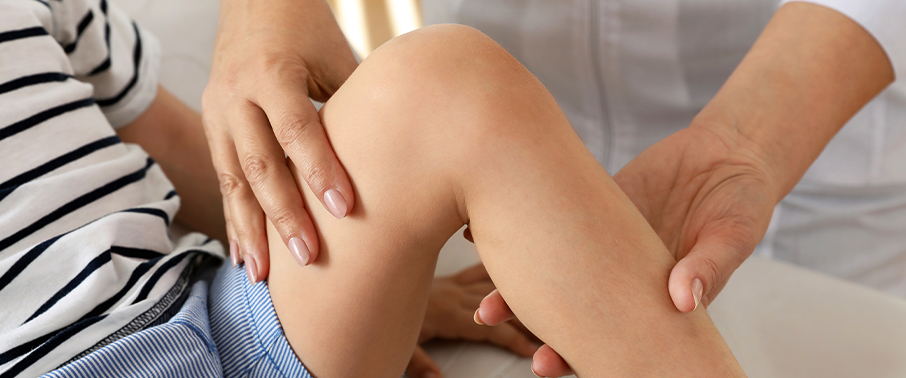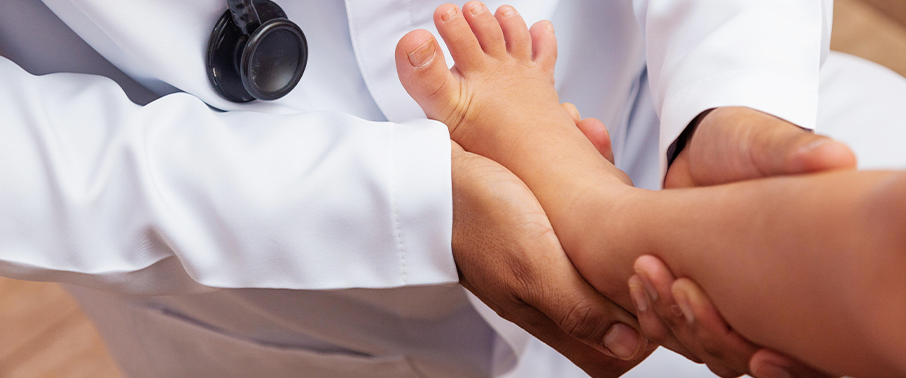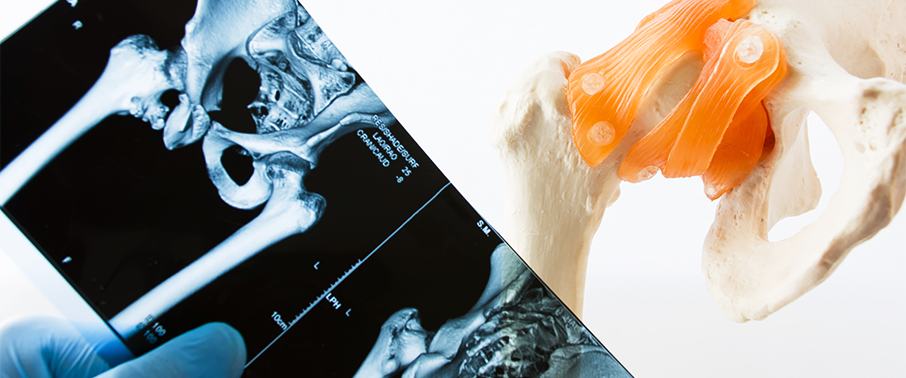Paediatric Conditions We See
We provide expert care tailored to the unique needs of children and adolescents. As both children and adolescents have yet to fully develop, they are more susceptible to different trauma injuries or birth deformities.
Our aim is to take into consideration the different factors that would be best suited to better support their musculoskeletal health. Learn more about the various paediatric orthopaedic conditions, empowering you to make informed decisions about your child’s care and well-being.

Paediatric Conditions We See

Common Paediatric Injuries
Sprains, fractures, and growth plate injuries are prevalent in children and adolescents. Seeking a proper diagnosis and treatment is essential for ensuring a smooth healing and recovery process.
Sprains refer to injuries that occurs when one of the ligaments around a joint is torn, stretched or damaged. Sprains are very common injuries, especially among athletes. Unlike strains that involves a band of tissue connecting two bones together, sprains involves an injury to the muscle or bands of tissue that attaches the muscle to the bone.
Children are more prone to fractures as their body—especially their bones and growth plates— are still being developed and weaker than an adult’s. Fractures refer to bones that have been either partially or completely broken due to falls, accidents, sports injuries or overuse.

Foot & Ankle
Bone deformities diagnosed at birth can be managed with non-invasive treatments such as braces, physiotherapy, and medication. However, neglecting these issues may lead to more serious complications. Don’t hesitate to seek early guidance from our doctor.
Clubfoot is a birth deformity in which an infant’s foot is turned inwards. This is caused by the tendons in the baby’s legs and foot, whereby the tendons are shorter and tighter than it should be, causing the feet to twist inwards.
Flat feet, also known as flatfoot, is a condition whereby one or both feet have little to no arch, causing the pads of the feet to press into the ground.
The arches in our feet are developed during childhood, help us to maintain balance and adapt to different walking surfaces. However, there are people who have been known to develop arches that are higher than a normal foot.
Pigeon toes, also known as in toeing, is a condition caused by bones or joints that are misaligned.
Tip toeing or toe walking is a common walking pattern among children, whereby the child walks on their toes and balls of their feet. For children under the age of 2 years old, this is a common walking pattern, and they usually begin to walk with a heel-to-toe pattern as they grow older.

Knee
Knee conditions in children are often part of development. However, if the condition persists or causes discomfort, further evaluation may be necessary.
Knock knees, also known as genu valgum, is a medical condition whereby a child’s knees are tilted inwards with their ankles spaced apart when standing. This condition is a normal part of growth and development. Hence, it is often seen among children especially toddlers. Knock knees usually resolves on its own by the time a child is 7 or 8 years old. Who are at risk of developing knock knees? It is normal for children aged between 2 to 4 years old to have their knees turned slightly inwards Furthermore, this condition gets better as the child grows.

Limb Deformities
Limb deformities in children can impact the structure and function of their arms and legs, whether they are present at birth or develop during growth. Our team is committed to early identification and personalised treatment plans to support every child’s unique needs.
Bowlegs (genu varum) is a condition where your child’s legs are curved outwards at the knees. This creates a wider gap than normal between the knees and legs. It is usually noticeable when your child stands with his or her feet and ankles together. Their legs appear to form the shape of an “O”. Bowlegs occur among infants aged between 12 – 18 months and can occur in one or both knees.
Limb length discrepancy (LLD) is a congenital condition whereby there is a noticeable length different in one arm or leg. The differences in arm length is less likely to disrupt a child’s normal functioning as compare to leg length, which can affect the child’s quality of life. Furthermore, the differences in limb length can vary from less than an inch to several inches, affecting a person’s ability to walk or stand.

Hip
Hip conditions can often be more serious than they first appear. Early diagnosis and appropriate treatment can greatly reduce the risk of complications in their adulthood. If you have concerns about their hip condition, please reach out for an in-depth evaluation and tailored treatment.
Perthes disease, also known as leg-calve-perthes disease, is a childhood condition where there is a temporal loss of blood supply to the head of the femur (hip bone). Without adequate blood supply, the bone cells die (avascular necrosis), followed by regeneration and healing.
Slipped Capital Femoral Epiphysis (SCFE) is a hip disorder commonly affecting children and adolescents during a growth spurt. During growth, the end of the femoral head that connects the femur to the growth plate (discs of cartilage found in growing children) is called epiphysis. A SCFE occurs during growth when the ball (femoral head) slips off the neck of the bone, interfering with normal hip joint function and motion. The condition usually develops over time and can cause pain, stiffness and instability in the affected hip.

